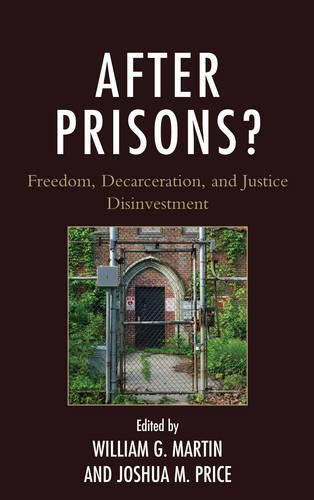Readings Newsletter
Become a Readings Member to make your shopping experience even easier.
Sign in or sign up for free!
You’re not far away from qualifying for FREE standard shipping within Australia
You’ve qualified for FREE standard shipping within Australia
The cart is loading…






As recently as five years ago mass incarceration was widely considered to be a central, permanent feature of the political and social landscape. The number of people in U.S. prisons is still without historic parallel anywhere in the world or in U.S. history. But in the last few years, the population has decreased, in some states by almost a third. A broad consensus is emerging to reduce prison rolls. Politicians have called for repealing the harshest sentencing laws of the war on drugs, abolishing mandatory minimums and closing correctional facilities. Does the decrease in the prison population herald the dismantling of mass incarceration?
This book provides an answer. Drawing on original research from across New York State, the contributors argue that while massive decarceration is taking place, the outcome to date is not the one wished for by reformers, namely a more just system. While drug law reform is clearly upon us, for example, a moral panic about heroin addiction and phantom meth labs has recently reached a fever pitch. As the penitentiary population drops and prisons close, the number of people in jail has swelled. New intelligence-led policing, and the rise of a reentry industry together have led to more surveillance and less social justice. Together these developments lead to justice disinvestment as the state sheds direct responsibility for the criminal justice system to the private and non-profit sector, while it extends its reach through new forms of community-based supervision, surveillance and policing into poor neighborhoods and communities of color. Celebration may be premature, in other words. Having endowed a group that is already disproportionately poor and people of color with the stigma of criminality, the state has left the formerly incarcerated and their communities to their fate. The future we face appears to be neither emancipatory reform nor simply the continuation of past mass incarceration. The challenge of freedom, on a scale not seen since the Reconstruction, remains before us.
$9.00 standard shipping within Australia
FREE standard shipping within Australia for orders over $100.00
Express & International shipping calculated at checkout
As recently as five years ago mass incarceration was widely considered to be a central, permanent feature of the political and social landscape. The number of people in U.S. prisons is still without historic parallel anywhere in the world or in U.S. history. But in the last few years, the population has decreased, in some states by almost a third. A broad consensus is emerging to reduce prison rolls. Politicians have called for repealing the harshest sentencing laws of the war on drugs, abolishing mandatory minimums and closing correctional facilities. Does the decrease in the prison population herald the dismantling of mass incarceration?
This book provides an answer. Drawing on original research from across New York State, the contributors argue that while massive decarceration is taking place, the outcome to date is not the one wished for by reformers, namely a more just system. While drug law reform is clearly upon us, for example, a moral panic about heroin addiction and phantom meth labs has recently reached a fever pitch. As the penitentiary population drops and prisons close, the number of people in jail has swelled. New intelligence-led policing, and the rise of a reentry industry together have led to more surveillance and less social justice. Together these developments lead to justice disinvestment as the state sheds direct responsibility for the criminal justice system to the private and non-profit sector, while it extends its reach through new forms of community-based supervision, surveillance and policing into poor neighborhoods and communities of color. Celebration may be premature, in other words. Having endowed a group that is already disproportionately poor and people of color with the stigma of criminality, the state has left the formerly incarcerated and their communities to their fate. The future we face appears to be neither emancipatory reform nor simply the continuation of past mass incarceration. The challenge of freedom, on a scale not seen since the Reconstruction, remains before us.